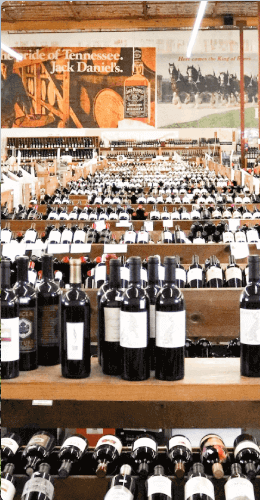The Bordeaux Wine Region and Its Influence

Bordeaux counts among the world’s most famous wine regions for many reasons, and now it’s easy to enjoy a variety of these wines from different appellations through online wine stores. Today, if Bordeaux were a country, it alone would be the 12th largest wine producer in the world, with around 60-70 million cases of wine produced annually. The region has a centuries-long history and a vast vineyard territory. Its wine grape varietals have nearly conquered the world; you will find Bordeaux’s winemaking techniques admired and copied, whether sampling wines from California, Australia, or Chile. Ordering wine online now makes it possible to easily compare Bordeaux wines with other wines that carry the Bordeaux influence. It’s like sipping from history . . .
Bordeaux got a big boost long before the advent of buying wine online, however, in the 12th century, when Eleanor of Aquitaine married King Henry II of England. Local wine growing had dramatically declined, and the union of Aquitaine with England made Bordeaux the primary producer for insatiable English palates (and gullets). This helped launch the French region, near the Atlantic Ocean, to its wine world ascendency in terms of worldwide trade, a place it retains. Bordeaux wines had to be made for transport, not so different from today when ordering wine online for voyages of hundreds or thousands of miles.
In fact, the classic high-shouldered wine bottle and the typical oak wine barrel of 225 liters (barrique) originate with Bordeaux, vessels meant to travel long distances without harming the wine they contain. Common worldwide wine grape varietals like Cabernet Sauvignon, Merlot, Semillon, and Sauvignon Blanc come from Bordeaux, as does their blending technique, intended to produce durable wines. In fact you will find many California wines in U.S. online wine stores identified as Bordeaux red blends, such as the 2019 Chappellet Mountain Cuvee Proprietor's Blend from Napa Valley. It has 44% Cabernet Sauvignon, 33% Merlot, 10% Malbec, 8% Petit Verdot, 5% Cabernet Franc, which are all red grape varieties allowed in the Bordeaux winemaking region, by law. Carmenere is also permitted. The allowed white varietals are just three: Sauvignon Blanc, Muscadelle, and Semillon.
Such a mixture of red wines would make the Napa wine similar to red blends of Bordeaux’s Left Bank, where more tannic Cabernet Sauvignon dominates the mix. “Left Bank” refers to the position vis-à-vis the vast Garonne River, and even some California producers use the phrase to characterize their wines, like the 2018 Neyers Left Bank Red, also from Napa. Compare the Chappellet Mountain wine, for example, with the 1990 Chateau Sociando-Mallet Haut-Medoc that contains 53% Cabernet Sauvignon, 42% Merlot and 5% each of Petit Verdot and Cabernet Franc. The celebrated Opus One is, as widely known, a very intentional copy of a Bordeaux-style blended wine now easy to buy online, with the 2018 vintage containing 84% Cabernet Sauvignon, 6% Petit Verdot, 5% Merlot, 4% Cabernet Franc, and 1% Malbec.
Bordeaux’s Right Bank is home to the vaunted Saint Emilion appellation, and the softer Merlot grape dominates here. In fact, Merlot is the most widely planted variety in the entire region, including the area known as Entre-Deux-Mers, which rests between the Garonne and the Dordogne, a river entering from further inland (thus the “two seas” or mers). Famous regions like Medoc and Pessac-Leognan (a sub-region of Graves) are home to numerous famous chateaux, as Bordeaux wine estates are called. In fact, you will today find vineyards and celebrated estates inside the boundaries of Bordeaux City, Chateau Haut-Brion being perhaps the most well-known example. Medoc is north of the city, while Graves is west and south of the metropolis.
Bordeaux white wines, though less famous, deserve attention. Nothing pairs better with a French-style seafood soup or raw oysters, as you will find visiting the Capucins Market in the City of Bordeaux. Sauvignon Blanc usually dominates the blend in dry Bordeaux white wines.
The queen of dessert wines, Sauternes, also hails from Bordeaux. This very complex, honey-colored wine’s most renowned producer is Chateau d’Yquem. Sauternes, like Right Bank reds, also endure for decades. The 1996 Chateau d'Yquem Sauternes, though 25 years old, is still today an available wine online, and brims with intoxicating flavors of mango, guava, and honeysuckle, all stemming from its blend of 75% Sémillon, 22% Sauvignon Blanc, and 3% Muscadelle. The Sauternes appellation is located within a Graves zone with creeks and often abundant morning fog, which encourages Botrytis cinerea to grow on the grapes, also known as noble rot. This causes micro-perforations in the grape skin; the slightly desiccated grapes, with concentrated sugar content, result in distinctively flavored sweet wines. As with Medoc-style red blends, many producers in California and elsewhere also produce long-lived wines with Semillon, like the 2001 Kalin Cellars Livermore Valley Semillon.
Written by:
Charlie Leary


















Leave a comment